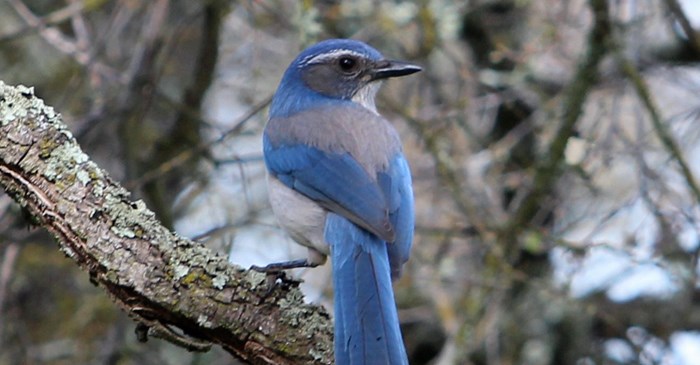These slate-colored birds of the Rocky Mountain West are named for their preferred habitat — the pinyon-juniper woodlands that span the lower mountains and foothills. There, they live in large flocks, reaching 250 or even 500 birds. For the most part, the social and highly intelligent Pinyon Jay spends its entire life in the same flock.
It’s hard to find a species that nests earlier in the year than the Pinyon Jay. They get started in late winter, with one nest per tree. The parents do all the feeding of the nestlings, but once the babies fledge, the adults in the flock are willing to feed any begging mouth within reach.
The Pinyon Jay's diet is made up of seeds and invertebrates. Their long, tweezer-like bills are well equipped for opening and probing into the green pine cones to remove the seed. In fact, if you look at the base of the Pinyon Jay’s bill, their nostrils are visible, which is unusual. Scientists think this is meant to keep their feathers from encountering any pitch from the pinecones.
Pinyon Jays have phenomenal memories. They cache thousands of seeds each year, and are capable of recalling their spots months later. Scientists believe that paired mates work together to store food because they appear to know each other’s hiding spots. Even so, some seeds end up being forgotten, so Pinyon Jays are sowers of trees.
Unfortunately, development and wildfires are a threat to the Pinyon Jay’s habitat, making these birds a species of concern under the U.S. Fish and Wildlife Service. At the same time, these are corvids, so, much like their cousins (Blue Jays, crows and magpies), Pinyon Jays are highly intelligent. They already migrate to different regions when food supplies are scarce. So there is reason to be optimistic that they’ll find their way.
Pinyon Jays are frequent visitors to bird feeders. To attract them, fill your feeder with their favorite things — peanuts, cracked corn and sunflower seeds — all of which are found in Lyric Supreme Mix.
